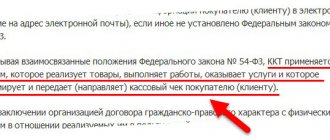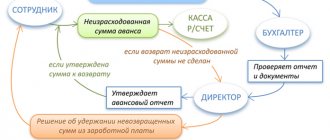What the law says
The definition of the term and the procedure for applying the regional coefficient is given in the Labor Code of the Russian Federation (Articles 146, 148, 315, 316), and in Resolution of the Ministry of Labor No. 49 of September 11, 1995.
Regional coefficient is a mechanism for equalizing the income of Russians who live in regions with a special climate
. The indicator intended for indexing pensions and payments under employment contracts is established at both the federal and local levels (albeit with reservations).
In accordance with Art. 316 of the Labor Code, regional coefficients must be established by the Government of Russia, but at the same time they do not cancel any additional payments to local residents from local budgets. Regional authorities, through their regulations, can increase the size of regional coefficients. In this case, additional payment will be made from regional budgets.
State organizations will be required to apply increased coefficients, and commercial companies will independently decide
, use the federal indicator or the modified local one. As for the northern regions, for them the size of allowances and the procedure for their calculation are regulated by the Federal Law of February 19, 1993. No. 4520-1. The RK for residents of the Far North of the RK fluctuates in the range of 1.15 – 2.0, for those who work on Antarctic expeditions, the regional coefficient is 3.0. Bonuses for citizens working in the northern regions (Article 316 of the Labor Code) are set as a percentage of the salary and depend on length of service, location, and age.
Due to the fact that the Government of the Russian Federation has not adopted any documents on the introduction of regional coefficients
, when using them, employers must be guided by previously approved but still valid regulations, even those issued under the USSR.
What is included in the Far North and areas equated to its regions?
Localities that must be classified as regions of the Far North and localities equated to its regions are determined by Resolution of the USSR Council of Ministers dated January 3, 1983 N 12 “On introducing amendments and additions to the List of regions of the Far North and localities equated to regions of the Far North, approved by Resolution of the Council Ministers of the USSR dated November 10, 1967 N 1029" (together with the "List of regions of the Far North and localities equated to regions of the Far North, which are subject to the Decrees of the Presidium of the Supreme Soviet of the USSR dated February 10, 1960 and September 26, 1967. on benefits for persons working in these areas and localities", approved by Resolution of the USSR Council of Ministers of November 10, 1967 N 1029).
Please note that in addition to the regions of the Far North, this resolution also contains a list of invalid decisions of the USSR Government on the inclusion of certain territories in the list of areas equated to regions of the Far North.
What incomes do regional coefficients apply to?
Payments increased by indexing by coefficients established by the government will be received by pensioners (only if they live in special territories, the additional payment is lost when moving), officially employed residents of the regions, and local residents receiving benefits. The coefficients apply to the following income:
- All payments from the employer provided for in a collective or employment agreement. Wages (tariff scale, salary). Minimum wage and all payments tied to it. Additional payments to wages (allowances for qualifications, length of service, for harmfulness, bonuses, compensation for temporary disability, if calculated based on the minimum wage, etc.). Salaries of citizens working part-time, with a flexible schedule, by season.
- Pension.
- Fixed benefits, which are determined based on average earnings on the basis of Federal Law No. 81 of May 19, 1995, Federal Law No. 255 of December 29, 2006. (pregnancy and childbirth, sick leave, child care).
Regional coefficients are not awarded
for the following types of workers' income:
- vacation pay;
- irregular or one-time financial assistance not provided for by the collective agreement or the employer’s accounting policy;
- travel allowances when an employee travels to a region not included in the list of special territories;
- compensation for temporary disability, if calculated not on the basis of the minimum wage;
- irregular bonuses;
- allowances for citizens for working in the conditions of the CS and regions equated to the Far North.
What information does the unified staffing form contain?
The staffing table is one of the internal regulatory documents that every organization (or entrepreneur with employees) must have.
The staffing table contains:
- list of structural divisions;
- names of positions, specialties and professions indicating qualifications;
- information on the number of staff units;
- information on salaries: tariff rates and salaries, bonuses, wage fund (payroll), including for the organization as a whole.
The main purpose of the staffing table is to determine the structure, staffing levels and size of the payroll. The document does not contain the names of employees and their staffing positions. The staffing arrangement (synonyms: staff replacement, staff list) is not established by regulatory documents. Staff replacement, unlike the staffing table, is not a mandatory document for the organization, however, it is often used. This is due to the fact that full-time replacement allows you to track vacancies, as well as the filling of staff positions when hiring a part-time employee or if the position is divided between several employees. Staff replacement is usually developed on the basis of the staffing table of the T-3 form with the addition of a column in which the last names, first names, and patronymics of employees occupying certain positions are entered. If an organization uses staff replacement in its activities, then it must be taken into account that this document must be stored for 75 years.
ConsultantPlus experts explained in detail how the staffing arrangement is drawn up. Get trial demo access to the K+ system and go to the HR Guide for free.
For which regions are regional coefficients provided?
In order for a territory to receive a status requiring equalization of incomes of the population, it must have special difficult conditions:
- unfavorable climate;
- bad ecology;
- lack of developed infrastructure;
- dependence of the population on transport;
- the presence of organizations with difficult working conditions or special types of activities.
For officially working citizens permanently residing in such regions, the employer is obliged to make payments taking into account the coefficient
(from 1.0 to 2.0, depending on the region), applying it from the first day of their employment.
Difficult terrains include
The Far North and areas with similar climatic conditions, the Far East, the southern part of Eastern Siberia. The highest RK - 2.0 is used in Kamchatka and the Kuril Islands, the lowest 1.1 - in some areas of Kalmykia, Rostov region and Dagestan.
Regional percentages
The Far North and territories equal to it suggest dividing bets into 4 groups. In each case the size is different. Groups 1 and 2 – 80%. They concern the Far North itself. Groups 3 and 4 – 50 and 30%, apply to regions with values equal to this territory.
Different regions have the following procedure for applying increasing rates:
- 100% applies to Antarctica, Chukotka Autonomous Okrug, Arctic Ocean, Koryak Autonomous Okrug.
- Group 2 or 80% is the city of Vorkuta, Yakutia, Khabarovsk Territory, Chukotka.
- Group 3 – 50%. The allowance is relevant for the Khanty-Mansiysk Autonomous Okrug, Arkhangelsk Region, and the Republic of Karelia.
- 30% or 4 group. Here we are talking about the Trans-Baikal Territory, the Komi Republic, Tyva, and the Republic of Buryatia.
Each region has certain areas where the applied coefficient differs from the standard rules stated above.
How to apply odds
The regional coefficient is a guarantee from the state that concerns the wages of residents of such regions
. The size and procedure for calculating and paying wages must be reflected by all employers in employment or collective agreements. The document must indicate the amount of remuneration for the work, as well as the amount of all federal and regional additional payments.
If such information is reflected in the collective agreement
, then when concluding an employment agreement you can make reference to this provision. All accruals in organizations are handled by the accounting department, which calculates earnings according to the scheme established by law. The resulting amount is multiplied by the coefficient corresponding to the specific area, due to which it increases.
The regional coefficient does not depend on the form of ownership of the organization, the place of its official registration, or the employee’s length of service. Regulatory acts do not provide restrictions on the maximum amount of income that is subject to indexation. The coefficient should be applied to every officially employed resident of the corresponding region who permanently resides and works there, a pensioner (for old age, long service, disability), and citizens receiving benefits.
The value of RK varies from 1 to 2, depending on the region
where a person lives. In some territories, the value of the coefficient is directly related to the category of workers. For example, in one area there will be different indicators for fishing industry workers and railway workers.
To find out what coefficient applies in the region, the employer can contact the local labor inspectorate
. All information can be found in specialized media, on thematic websites or in regulations.
Staffing: unified form T-3
From January 1, 2013, commercial organizations are not required to draw up personnel documents according to approved forms, that is, they can use independently developed document forms. However, the unified T-3 form is a fairly convenient and familiar way of designing the staffing arrangement. In addition, the staffing table of the T-3 sample form contains all the necessary information, so most employers continue to use this particular form of document.
Let us remind you that the staffing table - a form of the unified form T-3 - and the procedure for filling it out were approved by Decree of the State Statistics Committee of the Russian Federation dated January 5, 2004 No. 1. In order for users of our site to know how to draw up a staffing table, a sample document is presented in its pure form (in this section) and in the completed state (in the last section).
What happens if you don’t apply the regional coefficient?
The regional coefficient is calculated for an amount exceeding the minimum wage, therefore, wages for citizens working in regions with difficult climatic conditions cannot be lower than the fixed amount of the minimum wage multiplied by the RK
. If this happens, it means that the employer has violated the norms of the Labor Code of the Russian Federation and penalties and other administrative penalties should be applied to him.
For delays in payment of wages, the responsible persons of the organization are liable in accordance with Art. 142 TK. The regional coefficient increases workers' earnings, so if it is not calculated, the employer faces a fine: for a legal entity - up to 50,000 rubles
., director -
up to 20,000 rubles
.
If such a violation is repeated, the manager may be suspended for 3 years, and the organization will be fined up to 100,000 rubles. If malicious intent or self-interest is detected on the part of the employer, the culprit will face criminal liability under Art. 145 of the Criminal Code. This article provides for imprisonment for a period of 1 year.
Calculation examples
Consider a position in the field with a current increase of 1.8. To establish the exact amount of compensation, the remuneration for labor is multiplied with an increasing number.
Example – salary 45 thousand rubles, increase – 1.8. 45000 multiplied by 1.8. We receive 81 thousand rubles. This is the final amount of monthly payments for a particular citizen.
A special situation is when they count from salary.
For example, the standard salary is 18 thousand rubles. But the employee uses a five-day work week and works 4 hours a day. Because of this, the payment is reduced to 9 thousand. 1.4 – size for commercial organizations tied to the area. We multiply 9000 by 40%. We receive an increase of 3,600 rubles.
What documentation confirms the experience?
The actual existence of such experience is confirmed, as a rule, by an entry in the employment record or a certificate from the place of work. In the book to indicate experience as a northerner, along with the name of the institution that is the employer, it is necessary to indicate the region with the name of the settlement, which belongs to the regions of the Far North.
In the absence of such references, as part of the registration of an increased pension or for early retirement due to age, it is required to document, that is, with certificates, to confirm the actual position of the place of activity in the northern region. In the process of inclusion in the northern work experience for a pension, certificates must be used to certify work on a rotational basis, expeditionary basis, and so on, especially if the employer is not registered in such areas, but actual residential activities were carried out in these places.
Do companies have to have a staffing table?
Let us present two opposing points of view on this issue that exist today. The first asserts that enterprises must compile and have a SR. It is in it that the employee’s labor function and the amount of his salary are indicated, along with the employment contract. Art. 15 (explains the concept of labor relations) and Art. 57 of the Labor Code of the Russian Federation (determines the content and essence of the employment contract) define the labor function as “work according to the position in accordance with the staffing table.”
Adherents of the second point of view believe that the decision on whether an economic entity needs SR is made by the manager himself. This opinion is justified as follows:
- Fast. Goskomstat of Russia No. 1 dated January 5, 2004 established only recommended for use: unified T-3.
- Instructions for filling out work books (approved by the Post. Ministry of Labor of Russia No. 69 of October 10, 2003) indicated that records about the name of the position, profession, specialty, etc. are made “ as a rule , in accordance with the organization’s SR.”
Consequently, it is not indicated anywhere that SR is mandatory for use.
Attention! The FSS, the Pension Fund of the Russian Federation, and the Federal Tax Service agree with the first point of view. The FSS document is needed to verify the correctness of the calculation of insurance premiums, the Pension Fund of the Russian Federation - to clarify information about the length of service. Tax authorities may request SR during on-site audits.







